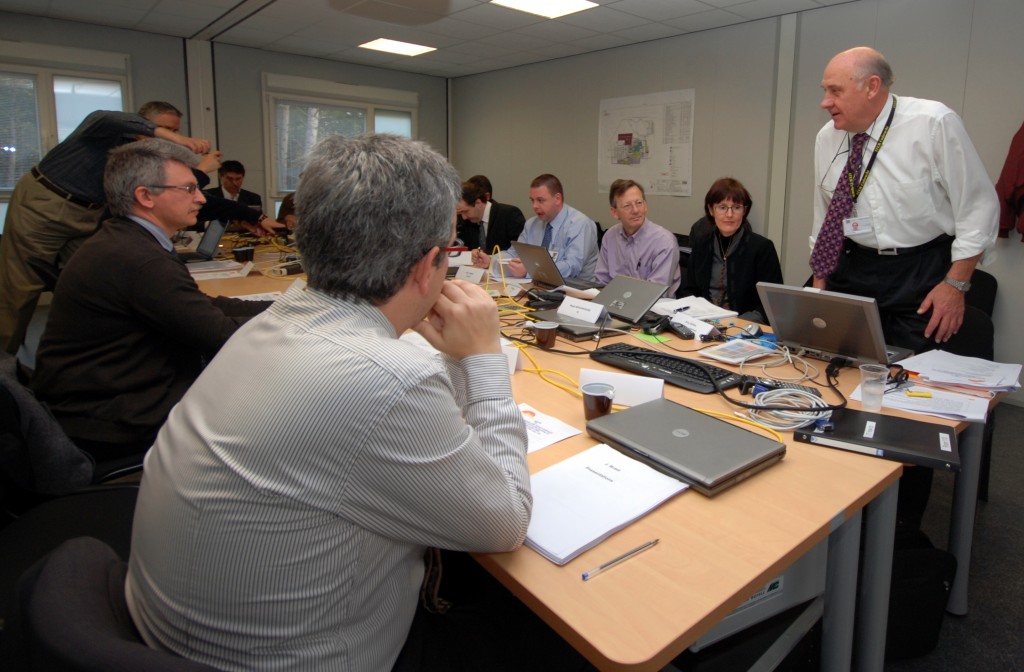ITER NEWSLINE
61
How much stainless steel for ITER hot cell?
Sabina Griffith
How much stainless steel for ITER hot cell?

Jerry Sovka, Chairman of the workshop, opens the session.
It is current practice for hot cells to implement stainless steel liners in order to increase the leak tightness of specific areas. Thus, to improve safety during operations and to reduce the amount of waste during the dismantling phase, about 30,000 m³ of the "red zone," the area within the Hot Cell Facility that will not be accessible during the nuclear phase of the operation, will be furbished with stainless steel. "After the review of requirements, there is consensus that using stainless steel lining in the red zones of hot cells is unavoidable," says Magali Benchikhoune, Hot Cell Section Leader, summing up the result of the second workshop on the issue of stainless steel liners.
The one-day workshop was chaired by Jerry Sovka, Head of the ITER Civil Engineering & Construction Division, and involved all responsible officers within the ITER Organization and the European Domestic Agency as well as external experts both from fusion and fission (JET, Dounreay site UKAEA, SCK.CEN Belgium, CEA, US SNS). "For the vast area outside the red zone, the use of resins or epoxy paint is a cost-saving alternative," says Benchikhoune, repeating the recommendation of the expert group. "We will now review methods for installation and related installation. Results will be integrated in the ongoing optimization plan."
The Hot Cell Facility design review is scheduled for 2-4 February 2009 in Cadarache.
return to Newsline #61


